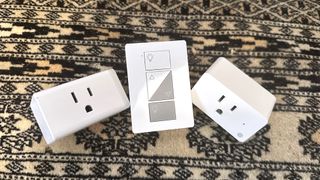Home
Explore Home
Latest about Home

Are you 'nose blind'? The 5 common smells that guests immediately notice, but you often miss
By Camilla Sharman published
Nose blind in your own home? How to tackle these 5 home hotspots before guests arrive.

iOS 26 code reveals new information about the rumored Apple Home Hub — here’s what we know
By Josh Render published
New code within iOS 26 seemingly reveals some of the possible features and hardware of the long-rumored Apple Home Hub, as well as a second unknown device.

Avoid costly drain damage: Know the right water temperature for keeping your pipes clear
By Camilla Sharman last updated
Don’t make this big mistake when unclogging your drains: A plumber warns to keep your cool.

Will walking on a frosty lawn ruin your grass? Here’s what the experts say
By Camilla Sharman last updated
Can you walk on a frosty lawn? Experts reveal why you’ll be making a big mistake.

Don’t let squirrels steal your bulbs — here’s how I keep them out of my planters
By Camilla Sharman published
Banish the bulb bandits: The simple trick to keep squirrels out of your bulb planters.

I’ve got a tiny bathroom with no storage space — IKEA’s $5 suction wall shelf stores all my clutter
By Annie Collyer published
Style meets function: this suction wall shelf is the perfect extra storage for tiny bathrooms

Can you water your houseplants with dehumidifier water? We asked the experts
By Cynthia Lawrence published
Is dehumidifier water safe to reuse for your houseplants? Here’s what the experts say.

Hurry! Best Buy is knocking $150 off our favorite no-subscription security camera
By Louis Ramirez published
Hurry! The Editor's Choice eufyCam S3 Pro is one of our favorite home security cameras and right now Best Buy is taking $150 off this bundle.
Here at Tom’s Guide our expert editors are committed to bringing you the best news, reviews and guides to help you stay informed and ahead of the curve!


